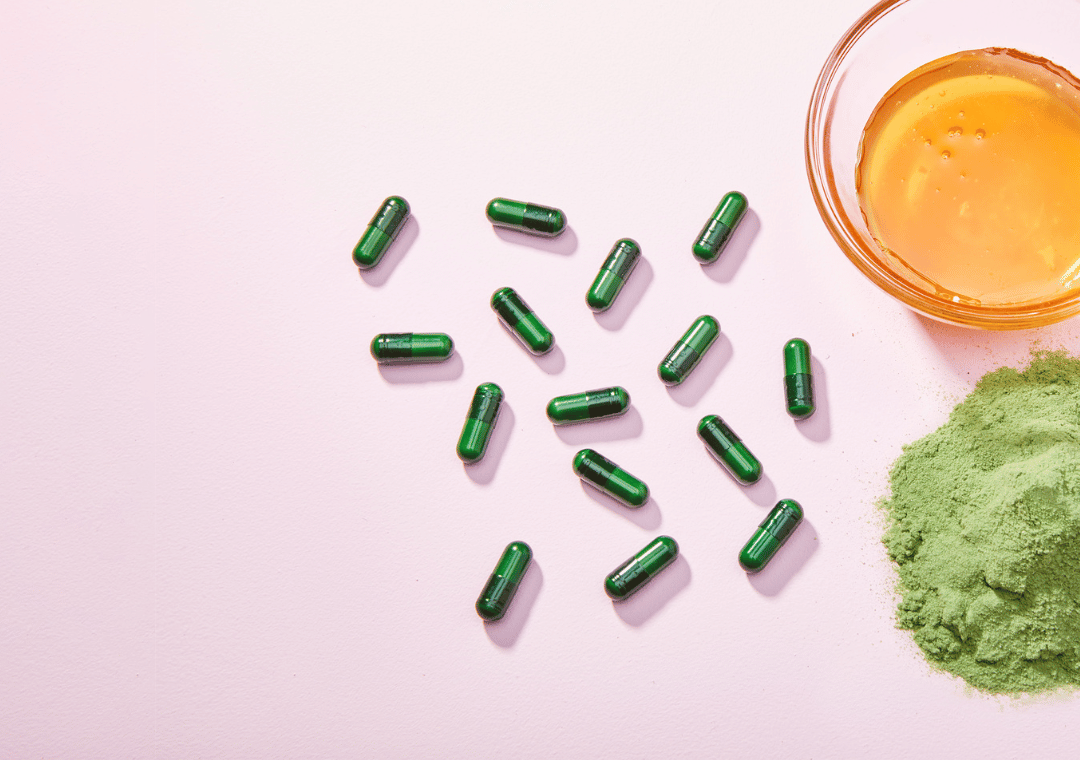The human gut is home to trillions of microorganisms. This intestinal ecosystem is known as the microbiome. The microorganisms that live in your gut are called gut flora, and they fit into two categories: good gut flora and bad gut flora.
The beneficial flora
The beneficial flora complete a ton of different tasks in the body, such as aiding digestion, absorbing nutrients, producing vitamins, enzymes and neurotransmitters, managing appetite, controlling metabolism, reducing inflammation, influencing immunity and communicating with your brain. The harmful flora can create disease and inflammation if they go unchecked. A healthy microbiome has the right balance and composition of good and bad microbes (about 85% good to 15% bad). This delicate balance can get disturbed by many factors: inflammatory foods (like sugar!), antibiotics, birth control pills, artificial sweeteners, gut infections, stress – just to name a few. And when there is a chronic imbalance in the gut, various health problems, such as digestive distress, food sensitivities, candida infections, immune dysfunction, skin issues, joint pain and mood conditions (such as anxiety and depression) may occur. Probiotic supplements, in conjunction with diet and lifestyle changes, are often needed to restore gut balance and support overall health.
As every person’s microbiome is different, it is difficult to know exactly how your body will respond to starting a new probiotic supplement. Most people report noticing a positive impact on their health within a week to a few months after beginning probiotic supplementation. If you’re new to probiotics, here are 10 signs that your probiotic is working:
Increased energy
Since one of the main roles of beneficial microbes is extracting nutrients from the foods you eat, you may notice that you have increased energy levels now that you’re absorbing more vitamins and minerals from your meals.
Regular bowel movements and reduction in gas and bloating
Probiotics help you digest food and absorb the nutrients. Proper digestion leads to perfect poops and decreased discomfort and inflammation in the digestive tract.
Fewer sugar/carb cravings
Our intestinal microorganisms are capable of manipulating our behavior and our appetite in order to obtain more of the substrates they thrive on. Bad gut flora feed on sugars as a fuel source to reproduce. Good gut flora’s food source is prebiotic fiber (from fruits and veggies!) so when the gut is in balance, sugar cravings tend to disappear.
Weight loss
Beneficial microbes improve nutrient absorption, regulate our hunger/satiety hormones, reduce inflammation and balance blood sugar, all of which are crucial to sustainable weight loss!
Improved immunity / fewer colds, flus and infections
80% of your immune system is located within your digestive tract. The good gut flora team up with immune cells to boost their overall defense against the pathogens and toxins that we get exposed to on a daily basis.
Decreased anxiety
The gut-brain axis is what the gut microbes use to transmit messages to your brain and vice versa. Research shows that increases in beneficial gut flora decrease anxiety symptoms.
Better mood
Did you know that 90% of the body’s serotonin (our “feel good” neurotransmitter) is made by the microbes in the gut? When the gut is full of healthy organisms, it is better equipped to regulate mood and positive feelings.
Fewer seasonal allergies
With the right balance of beneficial gut flora, your immune system is strong and can fight off allergens.
Improved skin health and appearance
Healthy gut flora decrease inflammation and facilitate proper elimination of waste. Since your skin is one of your organs of detoxification, a healthy gut means clear skin!
Decreased yeast infections and bacterial vaginosis
Restoring the bacterial balance in the gut will support the microbial ecosystem in the vagina, helping to prevent infections, manage an already active one or support antibiotic treatment.
There is the potential for symptoms, such as diarrhea, gas, bloating, cramps, rashes and acne, to get a little worse upon starting a probiotic supplement. Many people view this as a sign that the probiotic is not for them and stop taking it. Assuming these adverse side effects are relatively minor and do not last for more than 3 weeks, experts typically recommend “powering through” the transition period as these symptoms are only temporary. It is a sign that the environment in the gut is changing…for the better! In the meantime, decrease the supplement dosage, drink plenty of water and give your body a bit of time to adjust.
Written by Stephanie Morish.
Stephanie Morish is a Certified Holistic Nutrition Consultant and Natural Foods Chef. She currently lives in Denver, Colorado where she runs her nutrition consulting practice. Stephanie provides personalized, one-on-one coaching to support clients across the country in developing healthy and sustainable nutrition and lifestyle habits. Some of her specialties include helping clients improve digestion, balance blood sugar, shed excess weight, heal hormonal imbalances and get pregnant naturally. To learn more about Stephanie’s services, check out her website.

